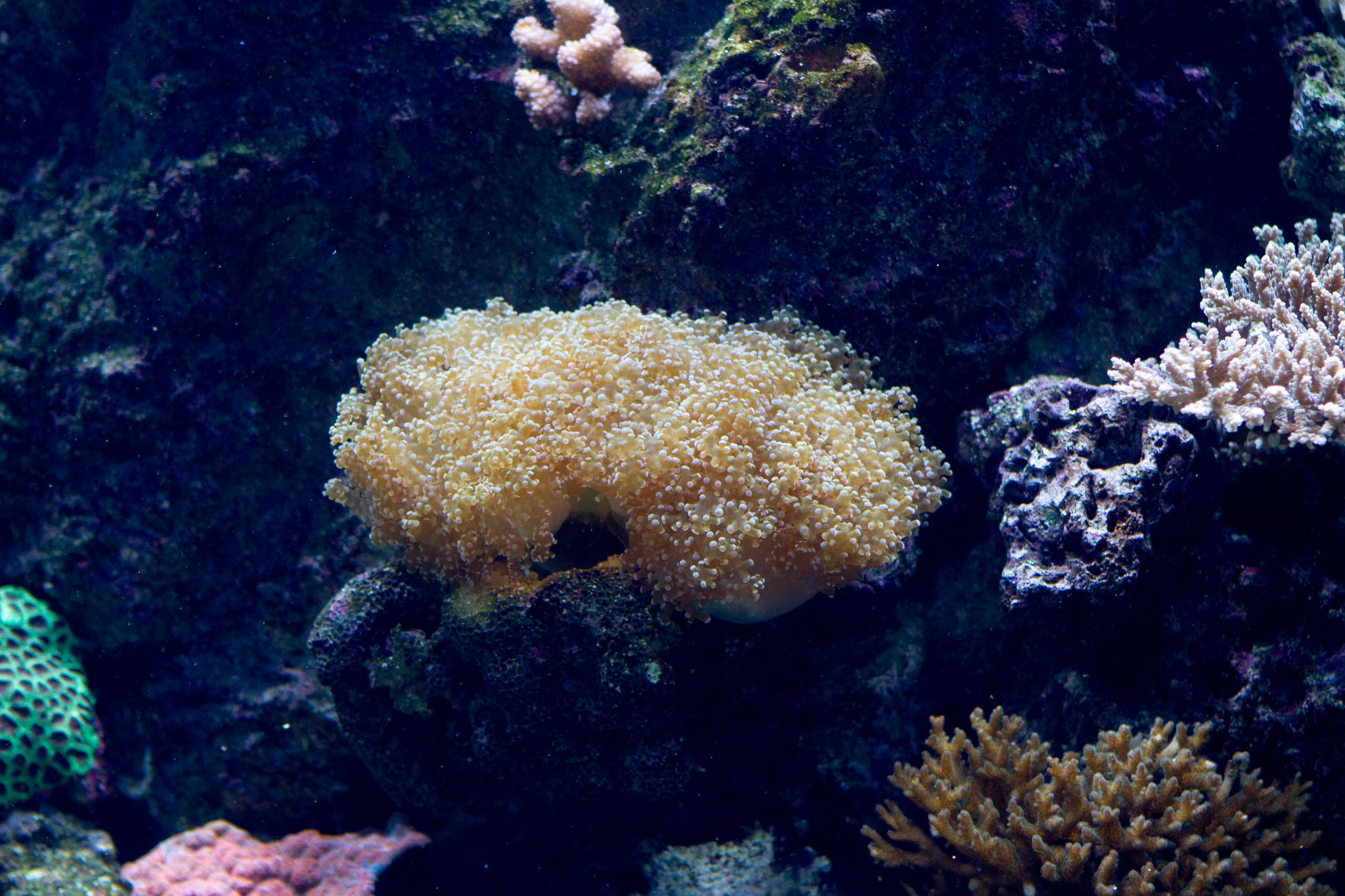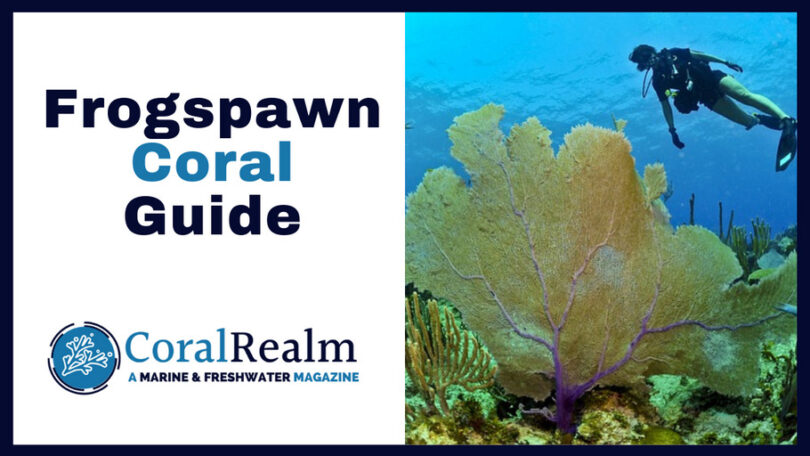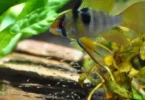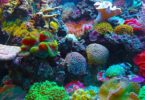Last Updated on February 10, 2023 by Matt
Frogspawn coral (Euphyllia divisa) is a highly sought-after species for reef aquarium enthusiasts due to its stunning appearance. Despite its popularity, there is a lot of inaccurate information circulating online regarding the care of this coral. This guide will provide you with all the information you need to provide proper care for your frogspawn coral, so it can thrive in your aquarium.
IN THIS ARTICLE
Species Summary:
Frogspawn coral is native to various locations around the world, such as Australia, Fiji, Southeast Asia, the Soloman Islands, and the Ryukyu Islands. It is also known by various other names such as wall coral, grape coral, octopus coral, or honey coral, but the common name is most commonly used. Frogspawn coral is a hardy species that can withstand a range of water parameters and conditions, but it is still important to provide it with the right care to ensure its survival.
It is important to note that the captive care of coral in aquariums requires specialized knowledge and equipment. In addition, the collection of wild coral for the aquarium trade can have a negative impact on natural reef ecosystems. Thus, responsible aquarium hobbyists should seek out captive-bred or sustainably harvested specimens and support conservation efforts to protect wild coral populations.
Appearance of Frogspawn Coral:
The appearance of frogspawn coral is quite unique and striking, making it a popular species among marine aquarium enthusiasts. This coral species is known for its branching, tree-like structure that resembles a frog’s spawn, hence its name. Each branch is covered with thousands of tiny polyps that are responsible for the coral’s growth and survival. The polyps are typically a brilliant shade of green, blue, or purple, with each one having a distinctive and noticeable translucent tentacles that they use to feed on tiny planktonic organisms.
The branches of the frogspawn coral are often composed of a soft, rubbery material that is flexible, but still sturdy enough to support the coral’s growth. This gives the coral a delicate, yet strong appearance that is both mesmerizing and fascinating to observe. The branches are usually about a half inch to one inch in diameter, and can grow up to several feet in length, depending on the species and its growing conditions.
In terms of texture, the frogspawn coral has a smooth and slightly bumpy surface that is covered in small bumps, known as verrucae, that are thought to help with water flow and oxygen exchange. These verrucae also add to the overall texture and appearance of the coral, making it even more unique and appealing.
When it comes to lighting and water conditions, the frogspawn coral is relatively adaptable and can thrive in a variety of environments. It prefers bright, indirect light, but can also survive in areas with moderate light. The water temperature should be kept between 72-78°F, with a pH range between 8.1-8.4 and a specific gravity between 1.023-1.026. It’s also important to keep the water free of pollutants, as they can harm the delicate coral.

IMG_3733” (CC BY 2.0) by beggs
Frogspawn Coral Care:
To provide proper care for your frogspawn coral, it is important to understand the necessary water parameters and its aggressive nature. The ideal tank size for frogspawn coral is at least 30 gallons, as it has a decent growth rate and needs room to expand.
Water Parameters: To ensure that your frogspawn coral thrives, you should aim to maintain the following water parameters:
- water temperature of 72° to 78°F
- pH levels of 8.1 to 8.4
- water hardness of 8 to 12 dKH
- specific gravity of 1.022 to 1.025
- It is important to regularly test the water using a reliable test kit to maintain these levels and address any unexpected changes before they become problematic.
Ideal tank size is at least 30 gallons and water parameters to aim for are a temperature of 72-78°F!!
Adequate water flow and moderate lighting are also crucial for the health of the coral. It’s recommended to use a water test kit regularly to ensure water parameters remain within recommended levels.
Frogspawn coral should be placed in a well-established tank with a moderate amount of water flow and moderate lighting. It should be fed small amounts of food regularly and can be propagated by splitting the colony into smaller pieces.
Water Flow: Adequate water flow is crucial for frogspawn coral care. The ideal water flow should be moderate, with a slightly higher flow rate being tolerable if necessary for other species in your tank. Too much water flow can negatively impact the growth and health of the coral’s polyps.
Frogspawn Lighting: Proper lighting is also essential for the survival of frogspawn coral. This coral requires moderate to high lighting, with intense lighting being the preferred option. You should aim to provide the coral with at least 10 hours of intense lighting per day, along with a gradually decreasing spectrum of light over the course of the day.
Frogspawn Coral Placement: When placing your frogspawn coral in your aquarium, it is important to consider its growth rate and potential aggression towards other species. The ideal placement is in a location with moderate water flow, and away from other corals that it may potentially bully. The coral should be placed at the bottom of the tank, but not on a sandy bottom, as it prefers environments with more muck.
Feeding Frogspawn coral
Aside from its unique appearance, frogspawn coral also has a unique diet that helps it to thrive in its natural habitat. Frogspawn coral typically does not require feeding as it can obtain its nutrients through photosynthesis.
Frogspawn coral primarily feeds on small planktonic organisms, including microscopic algae, tiny crustaceans, and other tiny planktonic creatures. These organisms are filtered from the water column by the coral’s long, flowing tentacles. The tentacles contain specialized stinging cells called nematocysts, which help the coral to capture and capture its food. The food is then transported to the coral’s oral disk, where it is ingested and digested by the coral’s digestive system.
In addition to feeding on planktonic organisms, frogspawn coral can also benefit from feeding on larger pieces of food, such as brine shrimp, mysis shrimp, or other small pieces of meaty food. These larger food items can be offered to the coral by target feeding, which involves using a feeding stick or turkey baster to deliver the food directly to the coral. This type of feeding is often performed in captive environments, such as aquariums, where the coral may not have access to the same variety and quantity of food that it would in its natural habitat.
In order to ensure that the frogspawn coral has access to the proper nutrients and energy it needs to thrive, it is important to provide it with a balanced diet that includes a mix of both planktonic organisms and larger food items. This can be achieved by offering a variety of different food types and providing target feeding on a regular basis.
Overall, frogspawn coral is a unique and fascinating species of coral that is known for its distinctive appearance and its unique diet. With proper care and feeding, this coral can be a beautiful and long-lived addition to any aquarium or reef system.
Propagation
Propagating these corals can be done through a process called fragmentation, which involves breaking a piece of the coral off from the parent colony and allowing it to grow into a separate, independent entity.
The process of fragmenting Frogspawn coral is relatively simple and can be accomplished using a clean, sharp pair of scissors or a cutting tool. The fragment should be placed in a high-flow area of the aquarium where it will receive adequate water movement and light exposure, as these factors are crucial for the health and growth of the coral.
Once the fragment has been placed, it is important to provide it with the proper water conditions, including the right temperature, salinity, pH, and water flow. Additionally, providing the fragment with the necessary nutrients and supplementing with trace elements such as calcium, magnesium, and strontium can greatly improve its growth and survival.
Another important aspect of propagating Frogspawn coral is maintaining good water quality. Regular water changes and the use of a high-quality protein skimmer can help to remove any waste products or harmful chemicals from the water, allowing the coral to grow and thrive.
It is also essential to be mindful of the other inhabitants in the aquarium when propagating Frogspawn coral. Some species of fish and invertebrates may attempt to feed on the coral, so it may be necessary to provide the fragment with some form of protection or to keep it out of reach of these potential predators.
Summary of care
In Summary, Frogspawn coral is a beautiful and popular option for reef aquariums, but it is important to understand its care requirements. Proper tank size, water parameters, water flow, lighting, feeding, and propagation are all essential for its health and survival. By following these guidelines, you can ensure that your frogspawn coral thrives in your home aquarium.







